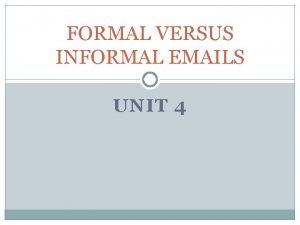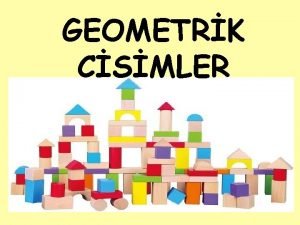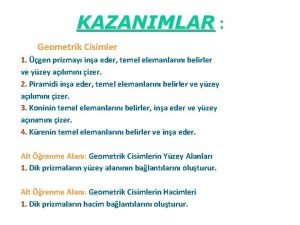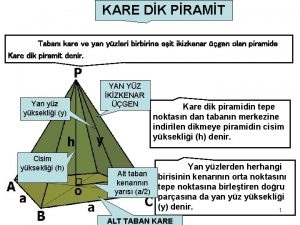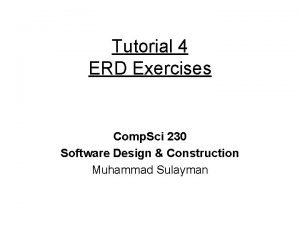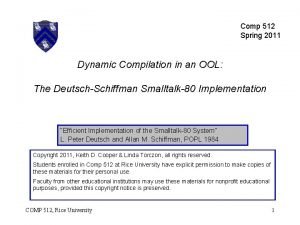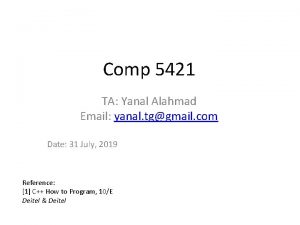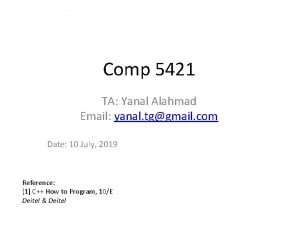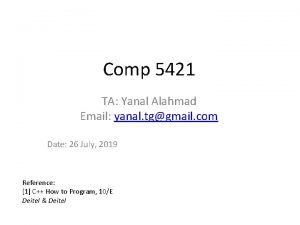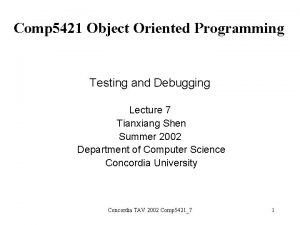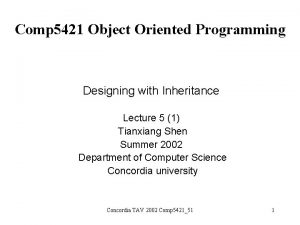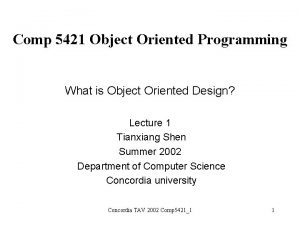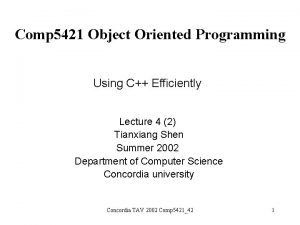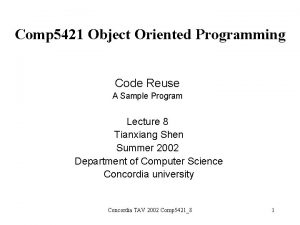Comp 5421 TA Yanal Alahmad Email yanal tggmail

















- Slides: 17

Comp 5421 TA: Yanal Alahmad Email: yanal. tg@gmail. com Date: 12 June, 2018 Reference: [1] C++ How to Program, 10/E Deitel & Deitel

Operator Overloading • Operator is overloaded by writing a non-static member function or non-member function • The function name ‘operator’ followed by the symbol for the operator being overloaded

Overloading Binary Operators as Member Functions class Test{ public: bool operator < (const String&) const; ……. }; y<z y. operator<(z)

Overloading Binary Operators as Non. Member Functions bool operator < (const String&, const String&) const; operator<(y, z)

Overloading Binary Stream Insertion and Extraction Operators • Should be overloaded as non-member functions, otherwise the awkward statements employee << cout employee >> cin !!! • Overloaded operator functions for binary operators can be member functions only when the left operand is an object of the class in which the function is overloaded • Run: Phone

Overloading Prefix Increment Operators • If its is defined as a member function Date& operator++( ); d 1. operator++( ) • If its is defined as a non-member function Date& operator++(Date& ); operator++(d 1);

Overloading Postfix Increment Operators • If its is defined as a member function Date& operator++( int); // dummy int for the compiler to distinguish d 1. operator++( 0) • If its is defined as a non-member function Date& operator++(Date&, int ); operator++(d 1, 0); • Run: Date

Inheritance • Allows a class to absorb an existing class’s capabilities, then customize or enhance them • You can specify a class that inherits an existing class • The existing class is called base class • The new class is called the derived class • Other OO programming languages such as java refer to the base class as super class, and to the derived class as sub class

Is-a Relationship • It is a relationship represents inheritance • An object of the derived class is-a object of the base class • Example: – Care is-a Vehicle

Is-a Relationship

Has-a Relationship (Composition) • Inheritance is not appropriate for every class relationship. • In Some cases, has-a relationship is more appropriate • Example – Employee has-a Birthdate Employee Has-a Birth. Date

Relationship Between Base and Derived Classes ü Run: Commission. Employee ü Run: Base. Plus. Commission. Employee

Creating Commission. Employee and Base. Plus. Commission. Employee Inheritance ü Run: Base. Plus. Commission. Employee. Inh

Using Protected Data • Base class’s public member is accessible within the body and anywhere of an object to the class • Private: in only accessible within the body of the class and the friend functions of the base class • Protected: offers intermediate level of protection between public and private • Protected: is accessible within the body of both the base and derived class

Problems with Protected • Inconsistency of base class data • Coupling

Constructor and Destructor in Derived Class • Constructor of the base class is called first, then the constructor of the derived class is followed • Destructor of the derived class is called first, then the destructor of the base class is followed

Invoking Base-Class Functions from Derived Class Objects ü Run: Commission. Employee. Invoking
 Tggmail
Tggmail Ascii classification
Ascii classification Informal email and formal email
Informal email and formal email Ayrıt sayısı
Ayrıt sayısı çok güzel oyunlar
çok güzel oyunlar Yanal düşünme yöntemi nedir
Yanal düşünme yöntemi nedir Piramidin yüzey alanı
Piramidin yüzey alanı Beşgen ayrıt sayısı
Beşgen ayrıt sayısı Altıgen prizma köşe sayısı
Altıgen prizma köşe sayısı Lateral düşünme nedir
Lateral düşünme nedir Bitkinin enine kesiti
Bitkinin enine kesiti Kare dik piramidin alanı
Kare dik piramidin alanı Küpün kaç köşesi vardır
Küpün kaç köşesi vardır 4erd
4erd Enagic founder
Enagic founder Comp 512
Comp 512 Comp sci 1027
Comp sci 1027 Primerica comp plan
Primerica comp plan


